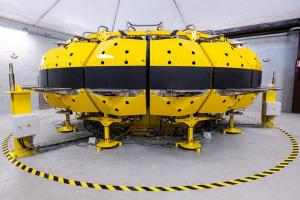Ready to exert serious pressure
The tool is ready; the first prototypes are on their way. Soon, a specialized test bench at CNIM (France) will enter into service to verify the resistance of the large composite rings that are designed to "push back" against the forces exerted on the toroidal field coils during operation.
The test facility and tooling have been procured by the ITER Organization through a contract with CNIM/Douce Hydro; the European Domestic Agency developed the conceptual design of the facility and is procuring the nine ITER pre-compression rings (two sets of three plus one spare set).



